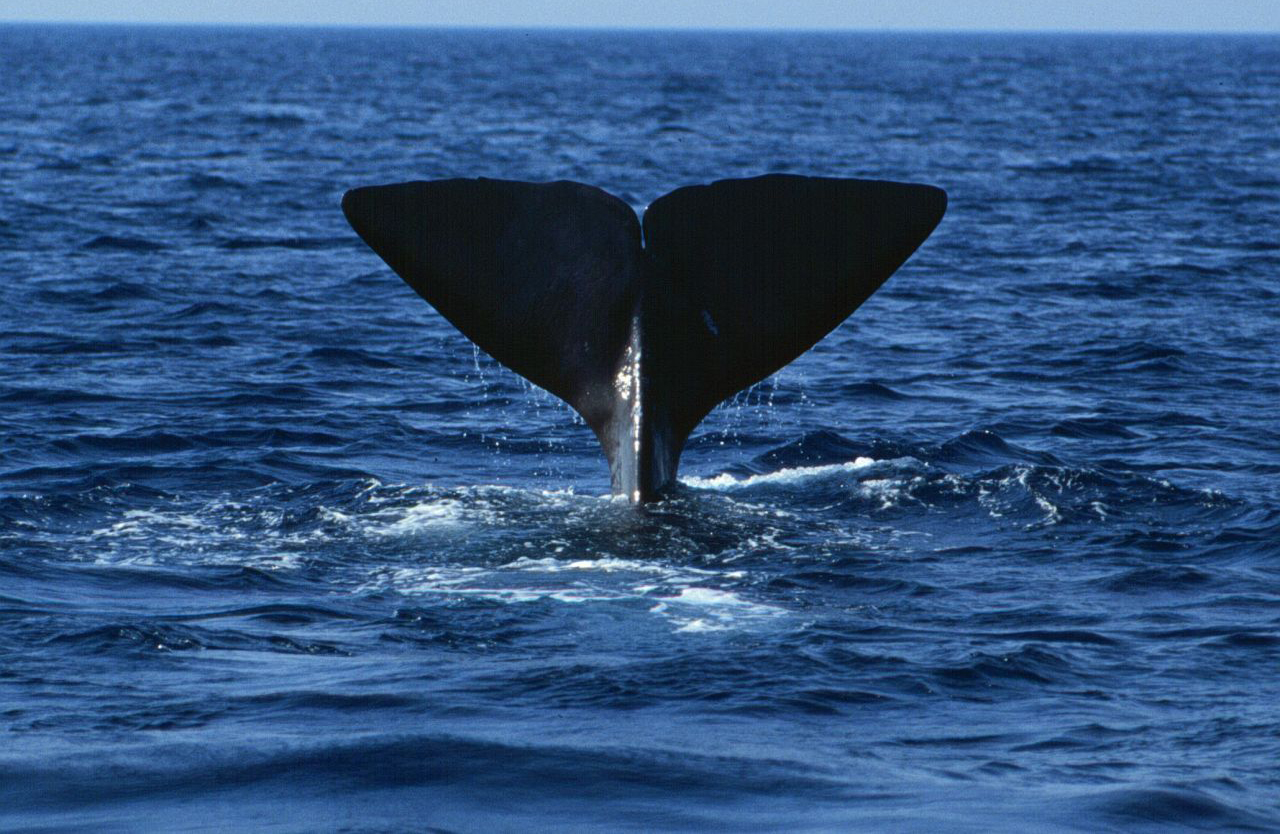 Hi-tech electronic ears are detecting signals that indicate the transit of sperm whales in the open sea, to the South East of Sicily. Scientists will soon be able to protect these extraordinary cetaceans from the risks associated with man's activities at sea, by calculating the probability of collision with ships and noise pollution levels. To “spy” on them, they are using the biggest and deepest cabled undersea listening station in the Mediterranean: a tower fitted with 14 acoustic sensors installed last May by the Italian Institute for Nuclear Physics at a depth of 3,500 metres in the south Ionian Sea 80 km southeast of Capo Passero in Sicily. A scientific facility that will make it possible to track the sperm whales in real-time and signal their presence to any ships that threaten to cross their path or generate dangerous levels of noise pollution. The acoustic sensors are “housed” in a 450 meter high tower on the sea floor, the first in a large series of towers which, as part of the Km3Net international project, in which the INFN has a central role, will detect the tiny neutrino particles coming from the Universe. Neutrinos produced by cosmic disasters huge distances away, which reach us after passing right through the Earth. The towers will have tens of thousands of optical sensors (photomultipliers), electronic “eyes” forming an underwater antenna capable of measuring the flash of light (“Cherenkov radiation”) generated as the neutrinos interact with sea-water. The acoustic sensors which listen to the “voices” of these giant cetaceans, saving recording them for five minutes every hour, are already up and running, as part of the SMO (Submarine Multidisciplinary Observatory) under the “Futuro in Ricerca” project funded by the MIUR (Italian Ministry of Education, Universities and Research) involving the INFN, the INGV (Italian National Institute of Geophysics and Volcanology), the Rome Sapienza and Rome 3 Universities and the Universities of Pavia, Messina and Catania. “As soon as they became operational, between March 23 and 27, they immediately detected the signals emitted by the first sperm whales”, said Giorgio Riccobene from the INFN’s Southern national laboratory (Catania). “Thanks to the new software we were also able to establish the size of the two animals, which are about 12 metres long. They could be females or young males. We had already conducted a listening project in 2005-2006, using another INFN station, a prototype of the current Km3Net, but were not able to determine the size of the sperm whales in real time. The new software has enabled us to make huge progress”. “Next we will conduct a statistical analysis of sea noise, which is a serious problem for cetaceans”, explained Gianno Pavan, marine biologist at the University of Pavia. “Sperm whales communicate over hundreds of kilometres but with noise pollution this distance is reduced to just a few kilometres, which has repercussions on reproduction, migration and beaching”.
Hi-tech electronic ears are detecting signals that indicate the transit of sperm whales in the open sea, to the South East of Sicily. Scientists will soon be able to protect these extraordinary cetaceans from the risks associated with man's activities at sea, by calculating the probability of collision with ships and noise pollution levels. To “spy” on them, they are using the biggest and deepest cabled undersea listening station in the Mediterranean: a tower fitted with 14 acoustic sensors installed last May by the Italian Institute for Nuclear Physics at a depth of 3,500 metres in the south Ionian Sea 80 km southeast of Capo Passero in Sicily. A scientific facility that will make it possible to track the sperm whales in real-time and signal their presence to any ships that threaten to cross their path or generate dangerous levels of noise pollution. The acoustic sensors are “housed” in a 450 meter high tower on the sea floor, the first in a large series of towers which, as part of the Km3Net international project, in which the INFN has a central role, will detect the tiny neutrino particles coming from the Universe. Neutrinos produced by cosmic disasters huge distances away, which reach us after passing right through the Earth. The towers will have tens of thousands of optical sensors (photomultipliers), electronic “eyes” forming an underwater antenna capable of measuring the flash of light (“Cherenkov radiation”) generated as the neutrinos interact with sea-water. The acoustic sensors which listen to the “voices” of these giant cetaceans, saving recording them for five minutes every hour, are already up and running, as part of the SMO (Submarine Multidisciplinary Observatory) under the “Futuro in Ricerca” project funded by the MIUR (Italian Ministry of Education, Universities and Research) involving the INFN, the INGV (Italian National Institute of Geophysics and Volcanology), the Rome Sapienza and Rome 3 Universities and the Universities of Pavia, Messina and Catania. “As soon as they became operational, between March 23 and 27, they immediately detected the signals emitted by the first sperm whales”, said Giorgio Riccobene from the INFN’s Southern national laboratory (Catania). “Thanks to the new software we were also able to establish the size of the two animals, which are about 12 metres long. They could be females or young males. We had already conducted a listening project in 2005-2006, using another INFN station, a prototype of the current Km3Net, but were not able to determine the size of the sperm whales in real time. The new software has enabled us to make huge progress”. “Next we will conduct a statistical analysis of sea noise, which is a serious problem for cetaceans”, explained Gianno Pavan, marine biologist at the University of Pavia. “Sperm whales communicate over hundreds of kilometres but with noise pollution this distance is reduced to just a few kilometres, which has repercussions on reproduction, migration and beaching”.







